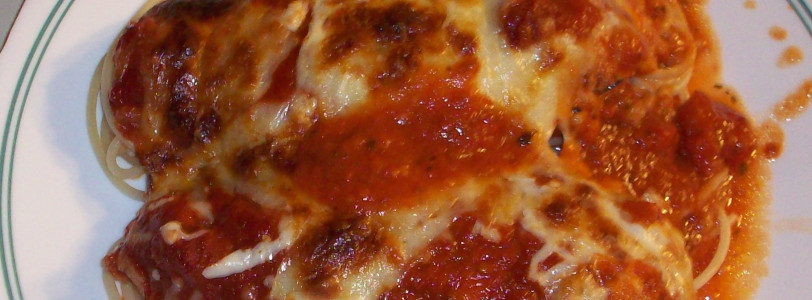Recipe number 1: chicken parm as adapted from “Binging with Babish” by Andrew Rea.
The chicken parm is something I’d heard a lot about recently, mainly through the maze of algorithms that make up the strange world of YouTube. The endless click bait style videos titled things like “15 minute meals to save your weeknight” or “midweek meal mythbusters” and chicken parmigiana would feature on almost every single one. Why? Because it’s simple, the ingredients are basically all store cupboard staples with the addition of a specific cheese and a reasonably core form of protein. As ever, the basic techniques done correctly create something much greater than the sum of its parts. The holy trinity of cheese, tomato and a dusting of breadcrumbs (or a subway roll if you prefer) cover a multitude of sins and will leave your family or your guests begging for more….
INGREDIENTS
- 1 Chicken breast per person
- Italian Red Sauce (I suggest using tinned chopped tomatoes or passata )
- 3 slices of torn white bread (for breadcrumbs)
- 1 tablespoon of garlic oil
- Generous grating of parmesan
- Generous grating of nutmeg
- A pinch of dried oregano
- Salt
- Pepper
- Flour
- Eggs
- Panko bread crumbs
- Mozzarella cheese
- Green vegetables and your choice of carbohydrates (to serve)
METHOD
- Begin by Preparing the chicken breasts by beating each breast liberally with a rolling pin. Cover your chicken with a freezer bag or cling film to allow for any mess and ease of movement around the work surface.
- Put your covered and beaten chicken to one side and then prepare a breadcrumbing station. In one bowl place a beaten egg, salt and pepper and in another bowl bring together breadcrumbs, parmigiana cheese and dried herbs. Soak the chicken pieces in the beaten egg and then coat in the breadcrumb mixture. Place the coated pieces on a baking tray, drizzle with garlic oil and place in the oven for 45 mins at 180 degrees Celsius.
- Heat your passata in a saucepan.
- Once the chicken is cooked bring it out of the oven and top with mozzarella and let melt for approximately 5 mins in the warm oven, making sure that this doesn’t burn in that time.
- Plate up with a portion of the warmed passata as a base, the chicken on top of that and serve with a handful of green vegetables of your choice and perhaps new potatoes or other carbohydrates of your choice.
Conclusion
The end result was delightful, more than that, the colours reminding me of an artists pallet ready for use, the golden of the chicken opposite the deep red of the passata and the emerald green of the handful of broccoli stalks that provide some much needed minerality and a vitamin boost. The meat itself, topped with a blanket of melted mozzarella and resting on a bed of passata was crunchy, juicy and very filling. The recipe demands a whole chicken breast (per serving) beaten until thin but if you’re not that big of an eater or preparing this for an older relative I would suggest cooking the whole breast as directed and then serving half, providing second helpings as necessary. I paired this with a local interpretation of a Belgian blonde beer which, while deeply aromatic and benefiting from a great fruity finish echoing mango and banana, was too highly carbonated for my taste and was sour when sipped. It is a style I am keen to explore further but I will not be drinking this interpretation again.
My thanks to Andrew Rea for the inspiration and I hope that I don’t offend anyone here by simplifying this recipe greatly.








0 Comments